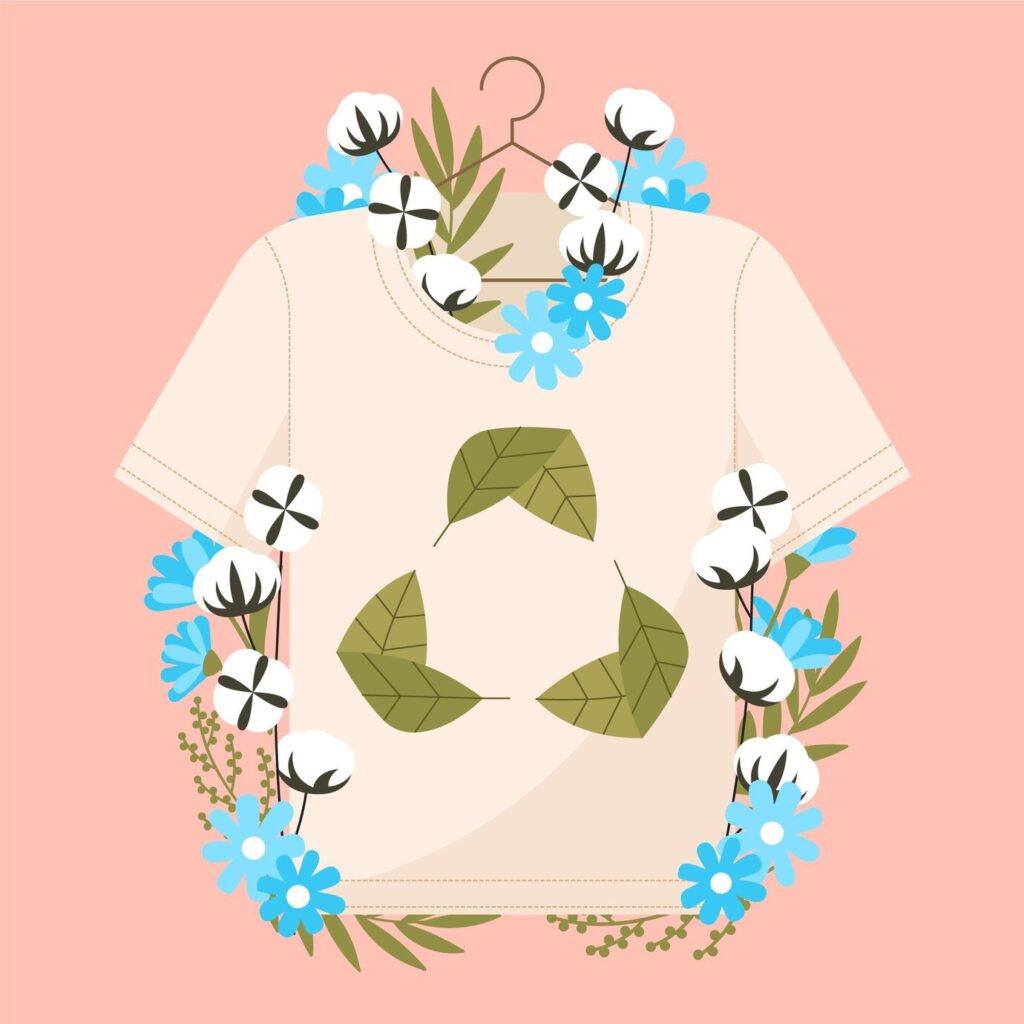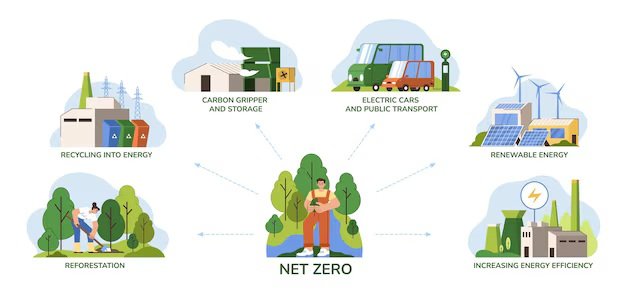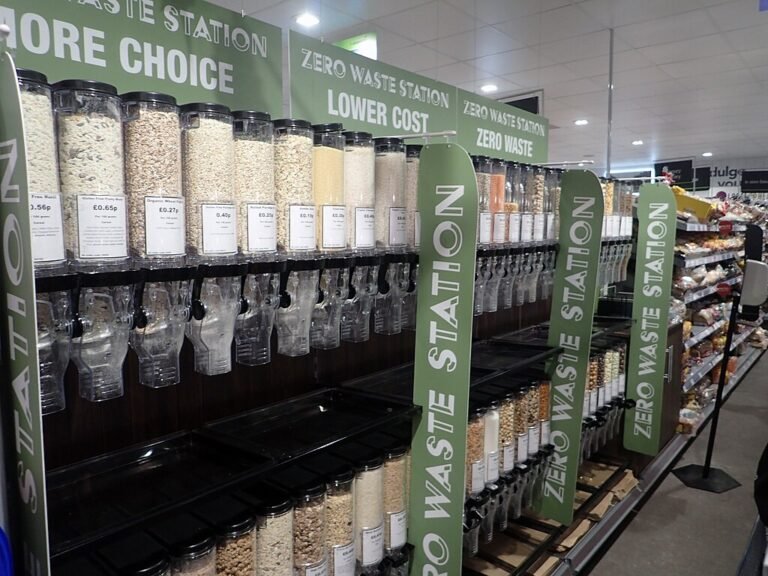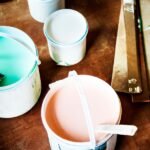Organic Cotton vs. Recycled Fabrics: Which Is More Sustainable?
In 2021, the global organic textile market was valued at approximately $13.55 billion and is projected to reach $27.17 billion by 2027, growing at a CAGR of 12.4%. This growth reflects a significant shift in consumer preferences towards sustainable materials. Simultaneously, recycled fabrics are gaining traction, offering a viable solution to the mounting textile waste problem, with approximately 85% of textiles ending up in landfills or being incinerated annually.
The fashion industry is at a crossroads, grappling with the environmental implications of its material choices. Organic cotton, grown without synthetic pesticides or GMOs, promises reduced water usage and healthier ecosystems. On the other hand, recycled fabrics, derived from post-consumer waste, aim to minimise landfill contributions and lower carbon emissions. Both materials present compelling sustainability narratives, yet each comes with its own set of challenges and benefits.

In This Article
- What Is Organic Cotton?
- What Are Recycled Fabrics?
- Head-to-Head Comparison
- Environmental Impact
- Social and Ethical Considerations
- Certifications and Transparency
- The Circular Economy and Innovation
- Consumer Behaviour and Cultural Context
- Conclusion: So, Which Is More Sustainable?
What Is Organic Cotton?
Organic cotton is grown without synthetic pesticides, herbicides, or genetically modified organisms (GMOs). Instead, farmers use natural methods such as crop rotation, composting, and beneficial insects to protect crops.

The Pros:
1. Water Conservation
Organic cotton farming significantly reduces water usage. According to the Soil Association, producing an organic cotton T-shirt saves approximately 2,457 litres of water compared to a conventional one—enough for one person to drink eight glasses a day for 3.5 years.
2. Enhanced Soil Health
Organic practices improve soil biodiversity and fertility. A study in India’s Nimar Valley found that organic farming increased soil organic carbon and nitrogen content, boosted microbial activity, and fostered distinct microbial communities beneficial for nutrient mineralisation
3. Farmer Well-being
Fewer chemicals mean healthier conditions for workers. In Peru, farmers transitioning to organic cotton reported improvements in both their health and land recovery, despite the initial challenges of adopting new practices.
The Cons:
1. Lower Yields
Organic cotton generally produces 25–30% less than conventional crops. A field trial in India observed a significant yield gap between organic and conventional farming systems during the initial conversion phase, with organic cotton yields being 29% lower.
2. Higher Costs
It’s more expensive to produce, leading to higher prices for consumers. The same Indian study noted that while organic farming had lower variable production costs, the initial lower yields could impact profitability during the transition period.
What Are Recycled Fabrics?
Recycled fabrics can come from either pre-consumer (scraps, offcuts) or post-consumer (used garments, plastic bottles) waste. These materials are mechanically or chemically broken down and re-spun into new fibres.

Common Types:
Recycled Cotton: This fabric is produced by collecting and processing cotton waste from production scraps or discarded garments. The fibres are mechanically broken down and re-spun into new yarns.
Recycled Polyester (rPET): Derived primarily from post-consumer plastic bottles, rPET involves cleaning, shredding, and melting the plastic to form new polyester fibres. This process not only repurposes plastic waste but also reduces reliance on virgin petroleum resources.
The Pros:
1. Waste Reduction
Recycling fabrics helps divert textiles and plastics from landfills and oceans, reducing environmental pollution. For instance, using rPET repurposes plastic waste, such as PET bottles, reducing the need for virgin resources and diverting waste from landfills and oceans.
2. Lower Carbon Emissions
Producing recycled polyester requires significantly less energy than virgin polyester. According to a 2017 study by the Swiss Federal Office for the Environment, producing rPET requires approximately 59% less energy than manufacturing virgin polyester. This substantial energy saving contributes to a reduction in greenhouse gas emissions.
3. Reduced Water Usage
Mechanical recycling methods, especially for cotton, use significantly less water compared to producing virgin materials. For example, studies suggest that recycled polyester requires only 10% of the water used for the production of virgin polyester.
The Cons:
1. Microplastic Pollution
Synthetic recycled fabrics, like rPET, still shed microfibers into waterways during washing. These microplastics can pollute oceans and harm marine life. Tools like the Cora Ball and specialised washing bags can reduce fibre shedding during laundry.
2. Quality Degradation
Each recycling cycle can shorten fibre lengths, leading to a decline in fabric quality. Recycled cotton, for instance, often requires blending with virgin fibres to maintain strength and durability.
3. Traceability Issues
Verifying the sourcing of post-consumer materials can be challenging. Inconsistent data collection and a lack of standardisation in the supply chain make it hard to ensure transparency. Vogue Business
Head-to-Head Comparison
| Category | Organic Cotton | Recycled Fabrics |
|---|---|---|
| Water Usage | Uses 91% less freshwater than conventional cotton by relying mainly on rainwater and healthier soil, which helps conserve water and reduce pollution. | Mechanical recycling methods consume minimal water, making it an efficient process. However, chemical recycling might require more water due to intensive washing. |
| Carbon Footprint | Emits about 2 kg of CO₂ per kg of cotton, which is 40% less than conventional cotton. | Recycled PET (rPET) fabric reduces CO₂ emissions by approximately 79% compared to virgin PET, emitting only 0.45 kg CO₂ per kg. |
| Chemical Use | Low biodegradability; synthetic fibres like polyester can take hundreds of years to decompose. | Generally minimal, but the presence of residual chemicals from previous uses can complicate recycling processes and may pose environmental challenges. |
| Biodegradability | Highly biodegradable, breaking down naturally without leaving harmful residues. | Soft and comfortable, but may wear out faster without chemical treatments that strengthen fibres. |
| Durability | Varies; some recycled fabrics may degrade faster, especially if the recycling process shortens fibre lengths. | Varies; some recycled fabrics may degrade faster, especially if the recycling process shortens fiber lengths. |
| Cost | Typically higher due to more sustainable farming practices and certifications. | Often lower, especially when produced at scale, but prices can vary based on the source and recycling method. |
Environmental Impact
Organic cotton stands out because it’s grown without synthetic pesticides or fertilisers. That’s not just good for farmers’ health—it’s better for the land, too. According to studies, organic cotton farming enhances soil organic carbon and nitrogen content, increases microbial abundance and activity, and fosters distinct microbial communities associated with nutrient mineralisation. This means healthier soil that can better support crops over time. Additionally, organic farming practices contribute to climate change mitigation by sequestering carbon in the soil.
Recycled fabrics, such as recycled polyester, address sustainability by repurposing existing materials. Producing recycled polyester uses 59% less energy and emits 20.7% fewer CO₂ emissions compared to virgin polyester. This process also reduces reliance on fossil fuels and diverts plastic waste from landfills and oceans. However, it’s important to note that recycled polyester can still shed microplastics during washing, contributing to ocean pollution.
Social and Ethical Considerations
Working Conditions
Organic Cotton: In India, Chetna Organic is a typical example of ethical organic cotton farming. Established in 2004, it now supports over 15,000 small-scale farming families across more than 400 villages. Through Fairtrade certification, Chetna ensures farmers receive fair prices, offers training, and invests in community development, including education and clean water initiatives.
However, not all organic cotton is ethically sourced. Some farms may lack proper labour standards, leading to issues like low wages and poor working conditions.
Recycled Fabrics: Recycled textiles, especially synthetics, are often produced in industrial settings. While some factories maintain good labour practices, others, particularly in China and Southeast Asia, have faced scrutiny. Reports highlight concerns over forced labour, especially involving ethnic minorities in China’s Xinjiang region.
In Southeast Asia, the push for rapid production has sometimes led to labour abuses, including excessive working hours and inadequate safety measures.
Labor Intensity
Organic Cotton: Growing organic cotton is labour-intensive. Farmers often rely on manual methods for tasks like weeding and pest control. While this creates employment opportunities, it can also mean long hours with limited financial returns, especially if market prices fluctuate.
Recycled Fabrics: Producing recycled fabrics leans heavily on technology. Machines handle much of the work, reducing the need for manual labour. This can lead to fewer job opportunities, but also means workers are less exposed to the physical demands of traditional textile production.
Certifications and Transparency
Organic Cotton Certifications
The Global Organic Textile Standard (GOTS) is one of the most recognised certifications for organic textiles. It ensures that textiles are made from at least 70% organic fibres and that the entire production process meets strict environmental and social criteria. This includes the prohibition of toxic chemicals and the enforcement of fair labour practices.
Another important certification is OEKO-TEX® STANDARD 100, which tests textiles for harmful substances. Products bearing this label have been verified to be free from over 1,000 harmful chemicals, ensuring they are safe for human health.
The USDA Organic certification, while primarily associated with food, also applies to cotton. It guarantees that the cotton is grown without synthetic pesticides or fertilisers, promoting healthier ecosystems and farming practices.
Recycled Fabric Certifications
For recycled materials, the Global Recycled Standard (GRS) and the Recycled Claim Standard (RCS) are key certifications. The GRS not only verifies the recycled content in products but also ensures responsible social, environmental, and chemical practices throughout the production process. The RCS focuses on tracking recycled raw materials through the supply chain, providing transparency and credibility to recycled content claims.
The Challenge of Transparency
Despite these certifications, transparency remains a significant challenge in the fashion industry. Greenwashing—where companies make misleading claims about their environmental practices—is widespread. For instance, Shein has faced scrutiny for allegedly making vague and deceptive sustainability claims, leading to investigations by regulatory authorities.
As consumers, it’s essential to look beyond marketing slogans and seek out verifiable certifications. By doing so, we can make informed choices that align with our values and support a more sustainable fashion industry.
The Circular Economy and Innovation
Recycled fabrics align more closely with the principles of a circular economy, aiming to minimise waste and reduce the need for virgin materials. Yet, recycling textiles isn’t without challenges. Many recycled fabrics are downcycled, resulting in lower-quality materials. Innovative companies are striving to change this narrative:
- Infinited Fibre Company has developed a technology that transforms cellulose-rich waste, like old cotton garments, into a new fibre called Infinna™. This fibre retains the softness and durability of cotton and is biodegradable, offering a sustainable alternative to virgin cotton.
- Circ employs a hydrothermal process to separate and recycle blended fabrics, such as polyester-cotton mixes. Their method recovers both polyester and cellulose fibres, producing materials that match the quality of virgin fibres.
- Worn Again Technologies focuses on chemically recycling non-reusable textiles, extracting pure polyester and cellulose. These recovered materials can be reintroduced into the supply chain, facilitating a closed-loop system.
Consumer Behaviour and Cultural Context
In Europe, the secondhand and recycled fashion market is experiencing significant growth. Platforms like Vinted have seen substantial increases in profits and user engagement, reflecting a strong shift towards sustainable fashion choices. A study by the Circular Fashion Federation projects that Europe’s resale apparel market will grow from €15.9 billion in 2024 to €26 billion by 2030, indicating a robust annual growth rate.
In contrast, the United States continues to show a strong preference for new cotton apparel. According to the USDA, U.S. per capita cotton consumption was estimated at approximately 25 pounds in 2024, reflecting a steady demand for cotton products.
This divergence in consumer behaviour shows the importance of cultural context in fashion choices. While European consumers are increasingly embracing recycled and secondhand options, often driven by sustainability concerns and supportive policies, U.S. consumers maintain a strong affinity for new cotton apparel, possibly influenced by longstanding perceptions of quality and comfort associated with cotton.
Conclusion: So, Which Is More Sustainable?
If your goal is to reduce chemical use and support biodiversity, organic cotton may be the winner. If you’re focused on minimising waste and lowering carbon emissions, recycled fabrics often come out on top.
But the best solution? A holistic one. Both materials have vital roles to play in building a sustainable fashion future. And ultimately, conscious consumption matters more than the materials themselves.
Actionable Tips for Conscious Consumers
Whether you’re leaning toward organic cotton or recycled fabrics, here are some practical ways to reduce your fashion footprint.
- Read Labels Mindfully: Look for trusted certifications like GOTS for organic cotton, and GRS for recycled materials. These labels ensure products meet strict environmental and ethical criteria.
- Wash Smarter: Synthetic fabrics, even recycled ones, can shed microplastics in the wash. Use laundry bags like the Guppyfriend to catch fibres before they enter waterways.
- Buy Less, Choose Better: Instead of chasing trends, focus on timeless pieces made to last. Investing in quality often means buying less over time.
- Support Ethical Brands: Choose brands that are transparent about how and where they produce their clothes. Look for those disclosing supply chain practices and labour conditions.
- Extend the Life of Your Clothes: Repair holes, upcycle into something new, or donate gently used garments. Giving clothes a second life keeps them out of landfills and supports a more circular economy.







